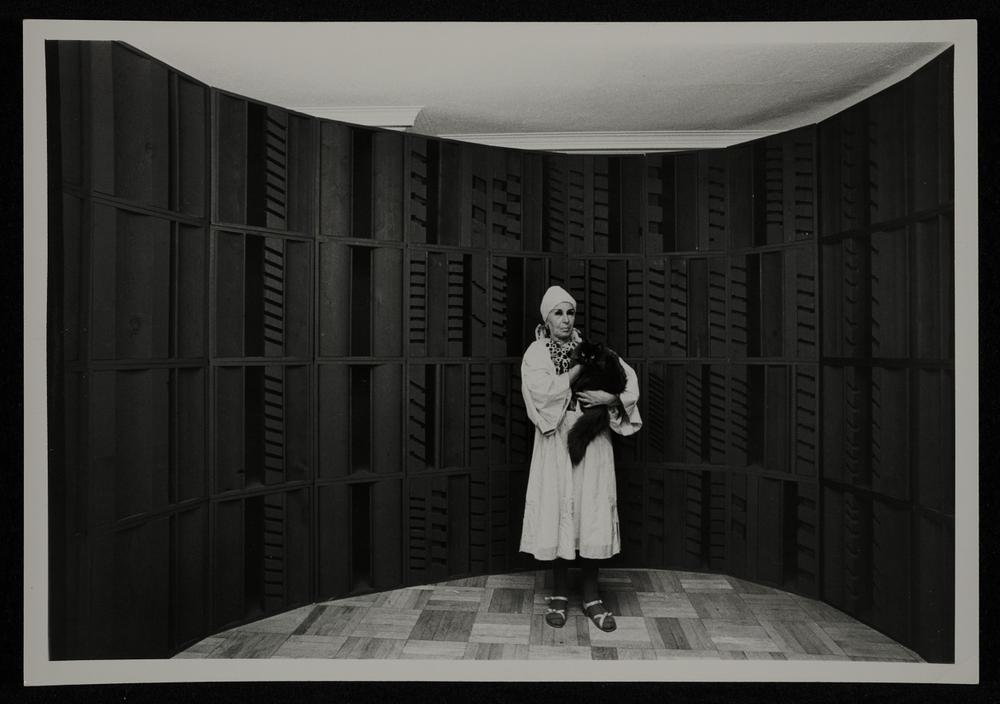Louise Nevelson. Queen of the Black Black
Born Leah Berliawsky in 1899, Louise Nevelson is an icon of self-creation: “I’ve always had to overcompensate for my opinion of myself. . . . I had to run like hell to catch up with what I thought of myself.”1 She built an evocative life after emigrating in 1905 with her family from Kiev, Russia, to the United States, where they settled in the small New England town of Rockland, Maine. Nevelson considered herself an artist from a young age: “I think there is a whole structure like a temperament, wavelength, conditioning, the way the mind works. All is put together to make a creative mind.”2 In 1920 she moved to New York City, where she studied painting, drawing, and drama. She attended the Art Students League in 1928–30 and worked under the Works Progress Administration program as an assistant to Diego Rivera, who introduced her to pre-Columbian art—an important influence on the use of terra-cotta and wood in her early work— and inspired archaic references to ritual, symbolism, and mystery throughout her career.3 In the 1950s, Nevelson pushed unorthodox use of material and form to include light and shadow in the creation of large-scale sculptural environments in “a search for continuity between beings, things, and spaces.”4 At that time, the artist also developed a flamboyant and grandiose persona—jet-black eyelash extensions, colorful coats, and bold jewelry—that reflected the enigma and complexity of her sculptures.
Louise Nevelson, in James Panero, “Gallery Chronicle: On Louise Nevelson: Dawns and Dusks at Pace Wildenstein,” New Criterion 27, no. 7 (2009), available at newcriterion.com/issues/2009/3/gallery-chronicle-4037. ↩︎
Nevelson, oral history interview with Arne Glimcher for the Archives of American Art, Smithsonian Institution, January 30, 1972, transcript available at aaa.si.edu/collections/interviews/oral-history-interview-louise-nevelson-13163#transcript. ↩︎
Martin Friedman, Nevelson: Wood Sculptures (New York: E. P. Dutton; and Minneapolis: Walker Art Center, 1973), 7. ↩︎
Elizabeth A. T. Smith, “‘What can be done, what I must learn, what there is to do . . .’: Process, Materials, and Narrative in the 1950s,” in Revolution in the Making: Abstract Sculpture by Women 1947–2016, eds. Paul Schimmel and Jenni Sorkin (Milan: Skira; and Zurich: Hauser & Wirth, 2016), 20. ↩︎
